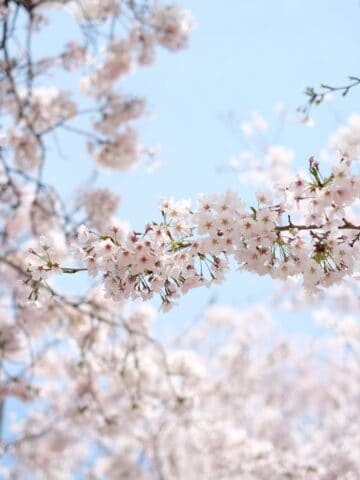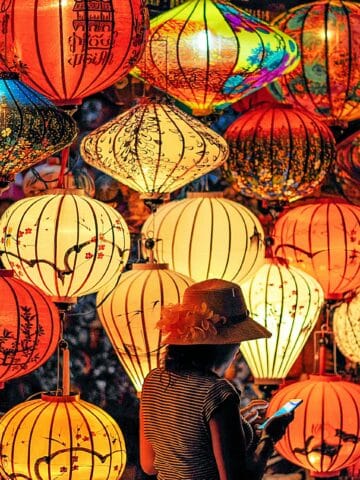Every autumn, families across South Korea gather to celebrate one of the country’s most important and beloved holidays—Chuseok. Often referred to as “Korean Thanksgiving,”
Chuseok is a time to give thanks for the year’s harvest, honour ancestors, and come together with loved ones. Rooted in tradition but alive in modern culture, it’s a holiday that blends history, family, and festivity in uniquely Korean ways.

Jump to:
🌾 What Is Chuseok?
Chuseok falls on the 15th day of the 8th month in the lunar calendar, usually in September or early October, when the harvest moon is at its brightest.
Historically, it was a way to celebrate the autumn harvest and express gratitude to ancestors for their blessings. Today, it’s a three-day holiday where millions of Koreans travel back to their hometowns, reconnect with family, and enjoy cultural traditions that have been passed down for generations.
🏡 Traditions and Customs
At the heart of Chuseok are rituals and practices that honour family ties and ancestral heritage:
- Charye (차례): Families perform ancestral memorial rites by setting a table with food offerings and bowing in respect.
- Seongmyo (성묘): Many visit ancestral graves, cleaning the sites and paying respects.
- Gift-giving: It’s customary to exchange gifts, ranging from fruit baskets and rice cakes to premium goods like meat sets, cooking oils, or health supplements.
- Family reunions: Chuseok is one of the busiest travel seasons of the year, with highways packed as people return to their hometowns.

🍽️ Traditional Chuseok Foods
Food is central to Chuseok, and each dish carries meaning tied to abundance and gratitude.
- Songpyeon (송편): Half-moon-shaped rice cakes filled with sesame seeds, sweet beans, or chestnuts, often made together as a family.
- Jeon (전): Savory pancakes, made with vegetables, meat, or seafood, pan-fried and shared at family tables.
- Han-gwa (한과): Colourful Korean sweets made from rice flour, honey, and fruits, often served during holidays.
- Seasonal fruits: Large, crisp Korean pears, persimmons, and apples are staples of the festive spread.
Preparing and sharing these foods isn’t just about feasting, it’s about celebrating abundance and family unity.
🎶 Games, Dance, and Festivities
Beyond rituals and meals, Chuseok is also a time for fun and cultural expression.
- Ssireum (씨름): Traditional Korean wrestling, where competitors try to topple each other by using their strength and technique.
- Tuho (투호): A folk game involving throwing arrows into a narrow container.
- Ganggangsullae (강강술래): A UNESCO-recognized traditional circle dance performed under the full moon, symbolizing community and harmony.
In many towns, you’ll also find local performances, festivals, and cultural showcases during the holiday.
🎁 Modern-Day Chuseok
While many traditions remain strong, Chuseok has also evolved with modern lifestyles. In cities, some families adapt ancestral rituals to fit smaller apartments, while others celebrate in simplified ways. Gift-giving has expanded to include luxury gift sets, premium fruits, and even online delivery packages.
The holiday is also known for the “great Korean migration,” where millions travel simultaneously to be with family, creating one of the busiest travel periods in the country each year.
🌏 Chuseok Beyond Korea
Korean communities abroad also celebrate Chuseok, bringing elements of the holiday to countries around the world. Whether through cultural festivals, food fairs, or community gatherings, Chuseok has become an opportunity to share Korean heritage globally and connect younger generations to their roots.
✨ Why Chuseok Matters Today
In the modern world, Chuseok remains a moment to pause, reflect, and give thanks. It’s a reminder of the importance of family, tradition, and gratitude.
Whether through a plate of freshly steamed songpyeon or a simple bow of respect to ancestors, Chuseok carries values that resonate across time and place, unity, thankfulness, and connection.
❓ Frequently Asked Questions
While Chuseok is often compared to Thanksgiving, it’s unique to Korean culture. Both holidays celebrate gratitude and family, but Chuseok’s roots are in harvest rituals and ancestral traditions.
Popular Chuseok dishes include songpyeon (half-moon rice cakes), jeon (savory pancakes), seasonal fruits, and han-gwa (traditional sweets). These foods symbolise abundance, good fortune, and family unity.
Chuseok is typically a three-day holiday, the day of Chuseok itself plus one day before and after. This allows families to prepare, celebrate, and travel to be together.





Comments
No Comments